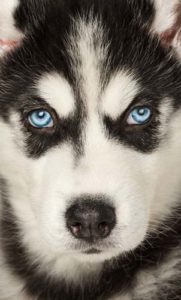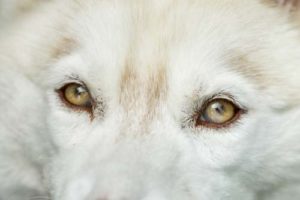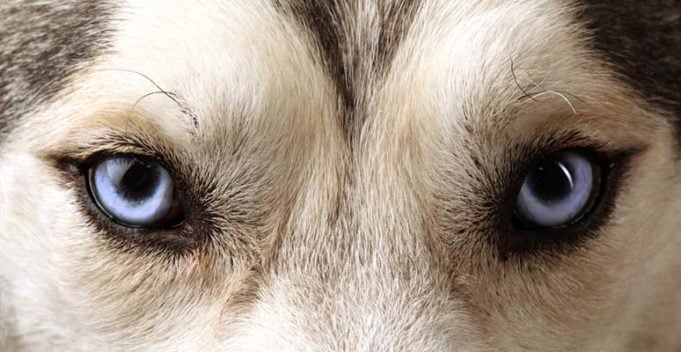Scientists from Embark Veterinary might have finally determined the answer to why Siberian Huskies have blue eyes. Following a DNA test of 6,070 dogs, the experts were able to single out a particular chromosome that is unique to the breed.
The findings from these canine genetics scientists were published in the journal PLOS Genetics. The DNA tests were done to demonstrate how the process is effective and useful, especially for dog owners who want to know their pet's lineage and biological origins.
OUR REVIEW: Embark Dog DNA Test Kit
A Duplication in the Chromosome
“Using genetic data from the pets of our customers, combined with eye colors reported by customers for those same animals, we have discovered a genetic duplication that is strongly associated with blue eye color.”
In the past, other scientists have already determined that some dogs with blue eyes have an odd genetic variant. For instance, there are some Australian Shetland Sheepdogs, Border Collies and Dalmatians that develop this particular eye color in relation to its how its genes also affect the development of its coat or hair. However, this genetic variant does not seem to apply to Siberian Huskies.
Embark Veterinary canine DNA testing company owners Adam Boyko and Aaron Sams (with whom we spoke about this on the podcast twice before – here and here) learned that Siberian Huskies have a duplication of the chromosome 18 near a stretch of genes called the CD82 and the ALX4. The scientists are still not clear about the importance of this stretch of genes but the ALX4 is said to be vital to the development of the eyes.
All mammals possess the ALX4 genes but its mutation might impact either abnormalities or distinction in the development of the species. Dogs, like humans, acquire two sets of DNA from their mother and father. One variant of the DNA sequence determines the color of the eyes. In dogs, the more dominant gene produces a brown eye color, while the recessive gene brings out the blue eye color.
But then, canine genetics aren't so straightforward or simple.
The Origin of Blue Eyes in Dogs
Thousands of years ago, humans with blue eyes were regarded as exotic. The people who possessed this physical characteristic had a fair or light skin and were mostly inhabitants of the northern climates.
It's been determined that those with blue eyes do not produce much melanin but those with brown or black eyes, on the other hand, produce a rich amount of melanin. The melanin is a dark skin pigment that protects man from ultraviolet rays.
 Experts theorized that pale-skinned folks who lived centuries ago developed blue eyes as an evolutionary response. Since they lived up north, where there was little sunlight, their bodies found a way to fight vitamin D deficiency in some form of a melanin switch.
Experts theorized that pale-skinned folks who lived centuries ago developed blue eyes as an evolutionary response. Since they lived up north, where there was little sunlight, their bodies found a way to fight vitamin D deficiency in some form of a melanin switch.
Now, it's not yet clear if Siberian Huskies have undergone a similar genetic evolutionary advantage as the humans. But the DNA tests revealing the duplication in chromosome 18 next to the ALX4 may have answered why some Huskies with dark coats — and thus have more melanin in their bodies — have blue eyes. Sams and Boyko, however, said that further testing is needed to validate their hypothesis, as per the press release.
The Rise of Dog DNA Sequencing
In the last two decades, dog DNA tests have grown in popularity for many reasons. In humans, it's used for establishing paternity and looking into one's genealogy. The demand for these tests has boosted the consumer genetics business into a profitable industry. So, it didn't seem surprising that this service has extended to pets.
What Embark Veterinary has done, therefore, is to offer a way for dog owners to determine their pet's genetic makeup. It can potentially help owners prepare for potential illnesses that are predisposed in their dog's breed.
There are hundreds of health conditions that put dogs at risk. Many of these conditions are easily influenced by the various physical traits in dogs, such as its eye color.
Siberian Husky Puppy’s Eye Color May Change
 During the first two weeks after birth, most Siberian husky puppies may initially have blue eyes because their bodies are still learning to produce melanin. But by the fourth or fifth week, this eye color might change to a dark shade of brown.
During the first two weeks after birth, most Siberian husky puppies may initially have blue eyes because their bodies are still learning to produce melanin. But by the fourth or fifth week, this eye color might change to a dark shade of brown.
However, some Huskies also develop hazel brown or amber eye color instead of dark brown eyes. Other Huskies even have two different colors, where one eye is blue and the other is amber or dark brown. This condition is known as heterochromia, which results from the uneven distribution of melanin in their body.
At least 15 percent of Siberian Huskies develop heterochromia, which is also called bi-eyed or bi-colored. Meanwhile, there's an equal ratio (2 out of 5) of Huskies developing either full blue eyes or full brown eyes.
There’s a myth that says a dog with light eye color (blue) is less healthy than a dog with dark eyes. However, the color of the eyes is not an accurate measure of the health of a dog in the same way that this isn’t also indicative of the health of a human.
Understanding Heterochromia or Bi-Eye in Huskies
Heterochromia iridum isn't considered a medical condition, so pet owners whose Siberian husky have two different eye colors should not be alarmed. It generally doesn't impact vision and even humans develop this condition. Among the famous personalities that have heterochromia are the late music legend David Bowie, award-winning actor Christopher Walken and “Prison Break” star Wentworth Miller.
Now, most dogs' eyes contain high levels of melanocytes in their iris. Those with heterochromia, however, lack this pigment. However, it's also possible for a dog with a low level of melanocytes to be manifesting eye damage and problems, especially if the change in eye color is not inborn but acquired over time.
 So, if you notice the eyes of your Siberian Husky changing in color gradually and if the dog shows pain or discomfort around the eye area, then it might be better to bring the pooch to the veterinarian for a proper eye examination.
So, if you notice the eyes of your Siberian Husky changing in color gradually and if the dog shows pain or discomfort around the eye area, then it might be better to bring the pooch to the veterinarian for a proper eye examination.
Conditions like cataracts, corneal dystrophy, glaucoma, retinal dysplasia, or underdeveloped optic nerve might lead to a change in eye color. It’s best to rule out what’s really happening to your dog so that preventive treatment may be administered. Acting on the problem as soon as possible can make a big difference in saving the dog’s eyesight.














